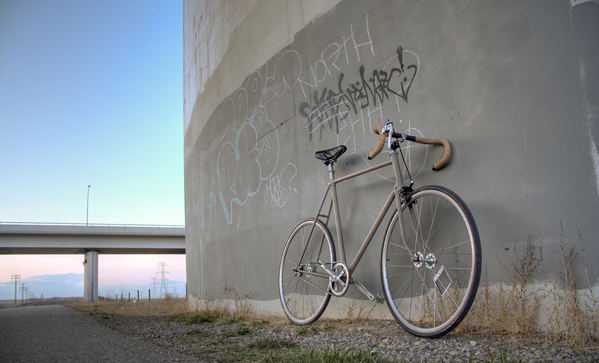Fixed-gear bicycles are more than just an essential hipster accessory; they’re also the best way to feel “at one” with your bicycle. Minimal moving parts means that maintenance is a breeze; the ride, however, isn’t always so easy: a fixed-gear bike means no coasting – even downhill. What’s more is that converting your old beater bike into a slick, smooth-riding fixie isn’t rocket science. Here’s how to do it.
The Bike
First things first, it’s important to start with the right bicycle. You want a frame with horizontal rear dropouts – pictured here – because they make for easy chain tensioning. The lighter the frame the better, of course.
The Strip
Remove all gear cables, shifters and even the back brake. Leaving useless parts on is unattractive – and it adds unnecessary weight. We recommend that you leave the front brake intact. Fixed-gear purists may frown on it, but being slightly uncool is better than being slightly critically injured.
The Rear Wheel
The key step is switching out the rear wheel, including the hub – that thing in the middle that holds all the spokes. To find a fixed back wheel, check Craigslist or a bike shop. Look for a wheel with a flip-flop hub; this allows for easy conversion to a traditional single speed bike (you simply flip the wheel around). When you install the wheel, ensure the chain is tight – tighter than a regular bike, which has chain tensioners – with no slack and the tiniest bit of give. For more info, visit SheldonBrown.com. For inspiration visit FixedGearGallery.com.
Image courtesy of brettohland.



You have to be an idiot to do this.
An alternate title for this article would be
“How to break your face for under 50$”.
Fixies are getting to be too much of a trend now. I get that they look cool, they’re simple to maintain, and they’re extremely lightweight, but you’re intentionally limiting the versatility of your bike. What if you move out of the city and bam – hills. You won’t look as cool struggling up a steep incline with one gear. Plus doing track stands at stoplights is just lame.
Nate, I agree, they’re for poseurs. And in urban settings, fixies are not only a hazard to the riders, but to the people they ride around.
Fixies are prone to chain breakage for obvious reasons. Try standing on a fixie on a busy city street when the chain inevitably breaks.